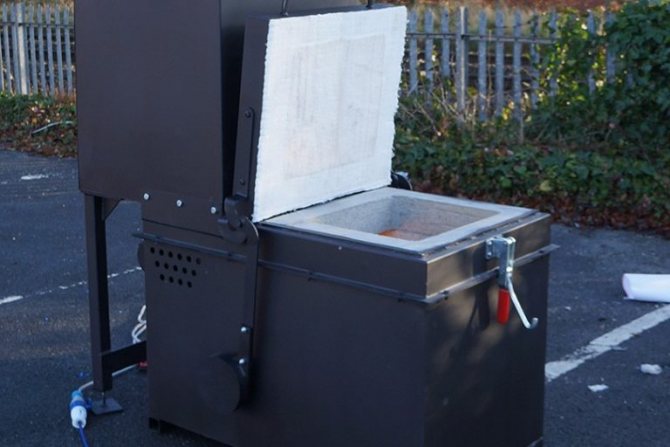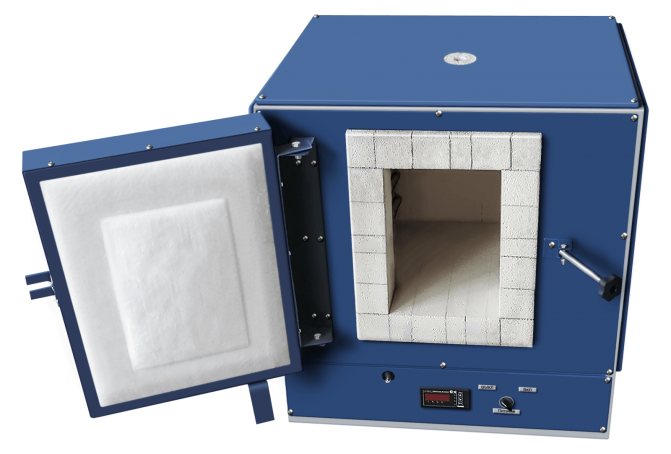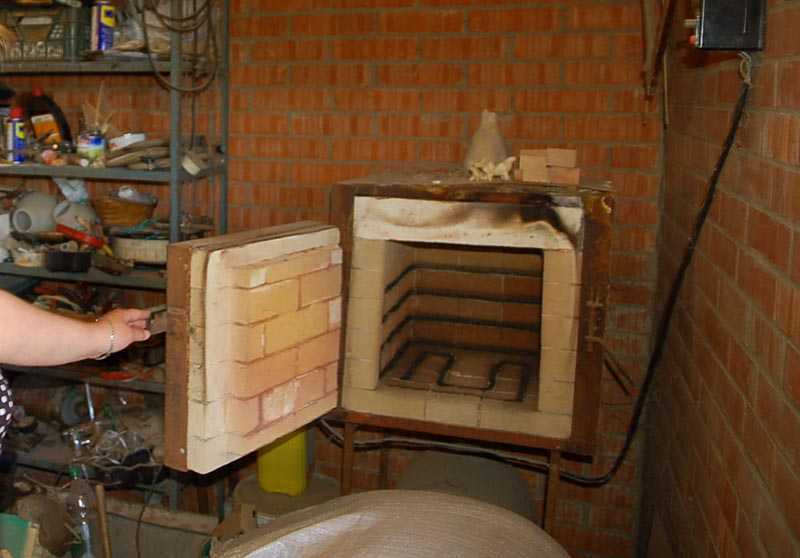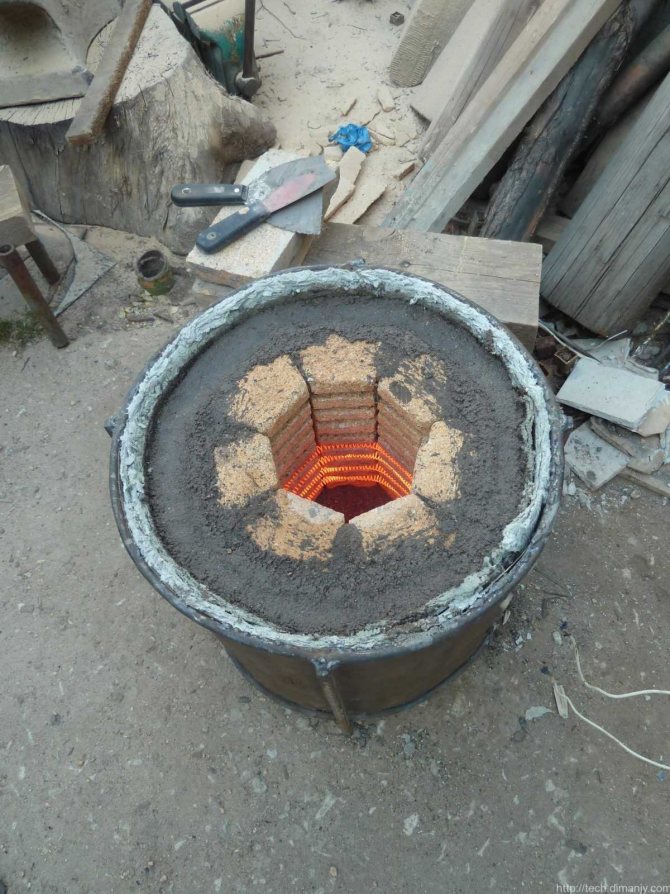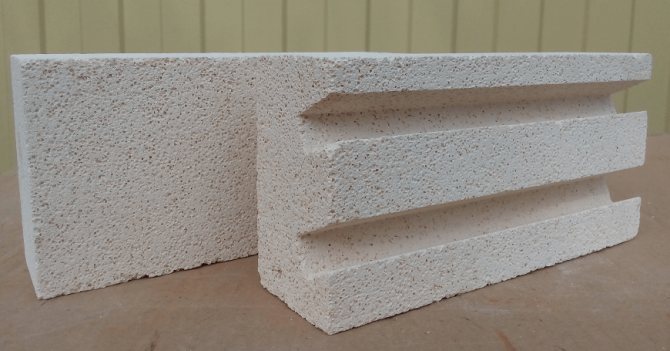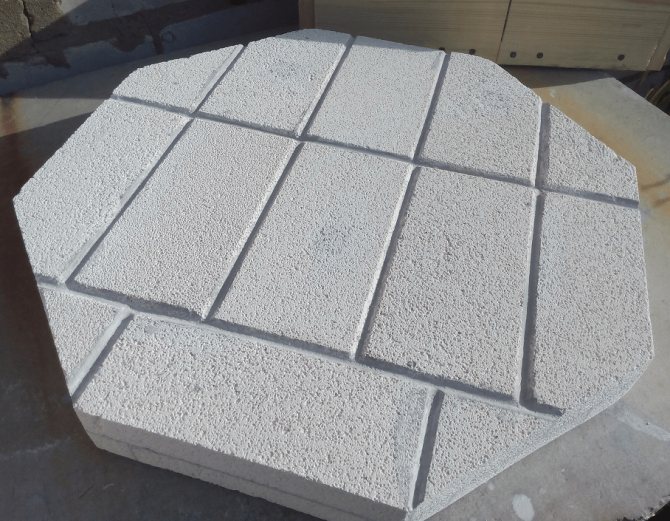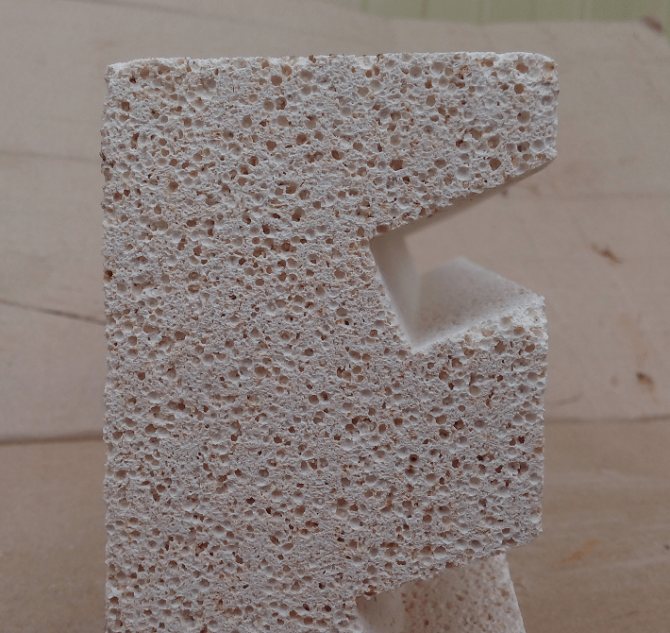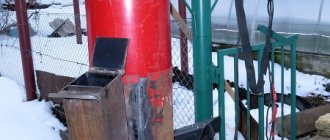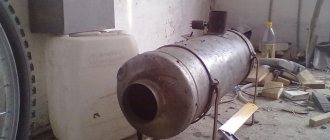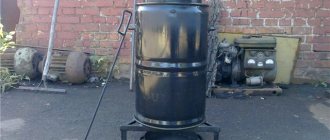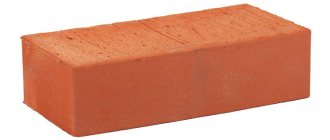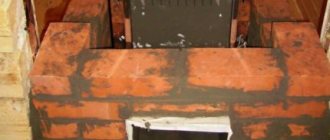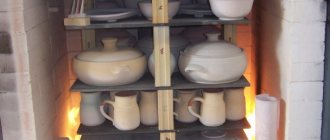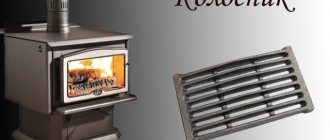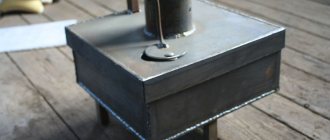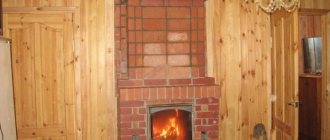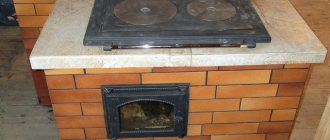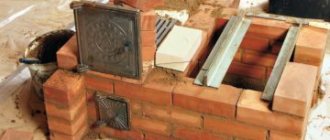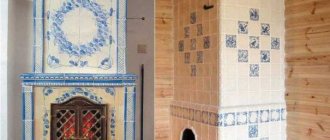Varieties of muffle furnaces
By design features, the devices are divided into:
- tubular or cylindrical;
- horizontal or vertical.
By the type of heat treatment composition:
- air;
- vacuum;
- based on inert gas.
Only an air muffle furnace can be made at home, therefore it is about it that will be discussed in the article.
By the features of the thermoelectric heater:
- gas;
- electrical.
Of course, a gas stove will bypass in operation 3-4 times cheaper than an electric one, due to fuel economy, but such a stove, firstly, is prohibited by law to manufacture and use, and secondly, it is technically extremely difficult to make a muffle stove with your own hands using gas.
Due to simple materials, the stove can be made in any convenient form, including one that ideally suits the interior of the room.
Photo 2 Scheme of an industrial muffle furnace
Manufacturing the device
In this case, we will tell you how to make a vertical muffle furnace for firing ceramics with your own hands.
To do this, you need the following tools:
- angle grinder (grinder) and 1-2 circles;
- electric arc welding and electrodes;
- locksmith tools, including wire cutters;
- 2mm nichrome wire.
and materials:
- 2.5 mm steel sheet or used oven body;
- corner;
- fittings;
- basalt wool;
- refractory fireclay bricks;
- refractory mortar;
- silicone sealant.
Main elements
Housing
Ideally, the body of an electric oven or miracle oven is suitable as the basis for a homemade muffle furnace for fusing or cupelling, since it already has all the necessary insulation. All you need to do is remove or remove all plastic elements.
Photo 3 Old oven in the form of a muffle furnace body
If it was not possible to find such an oven, the body can be welded from a sheet previously cut into blanks. Weld all the sidewalls, clean the seams with a metal brush or grinder and cover with a primer.
Making a case from sheets, although a little more complicated, allows you to make the design that fits in size for a specific room.
Heating element
A key component of the device, since it is on it that the temperature in the oven and the heating rate depend. You will also need to make a thermostat for a muffle furnace with your own hands, or purchase a ready-made one. A nichrome wire will act as a heating element, the diameter of which is selected depending on the maximum temperature. The minimum and most consumable diameter is 1.5-2 mm.
Nichrome on a standard spiral can withstand 1100 degrees, but it is necessary to exclude the ingress of air, otherwise it will burn out. Fechral is best suited for a muffle furnace - its working temperature is 1300 degrees, and it is “friendly” with air.
Photo 4 Heating element
Any electric muffle furnace, even the smallest one, made by hand, when heated to 1000 degrees, spends about 4 kW. Check all wiring and set the auto-stabilizer to 25A before use.
Thermal insulation
The most important aspect of work, which is responsible for the integrity and efficiency of the entire structure. Inside the muffle furnace, fireclay bricks are installed on fire-resistant glue. To the size of the oven, it is cut off with a grinder. Basalt wool is used on top.
Photo 5 Fire-resistant glue Terracotta
Some forums for the manufacture of muffle furnaces recommend using asbestos for masonry. This is really a fire-resistant material, but already at a temperature of 650 degrees + it begins to release carcinogens.
Making a homemade muffle furnace
The first point can be skipped for those who use an old oven as a body.
DIY muffle furnace
At home, you can assemble a simple oven design with your own hands. In this case, a "do-it-yourself" muffle furnace will run on electricity. The main element - a muffle - can be made of clay or folded from fireclay bricks.
For a clay muffle, a blank is made of cardboard or plywood. The resulting box is covered with a layer of clay with a thickness of 1 cm, dried until it hardens (3-5 days) and fired in a coal oven. The firing temperature is 700-800ºC. This is sufficient to vitrify the clay structure and create a strong inner chamber.
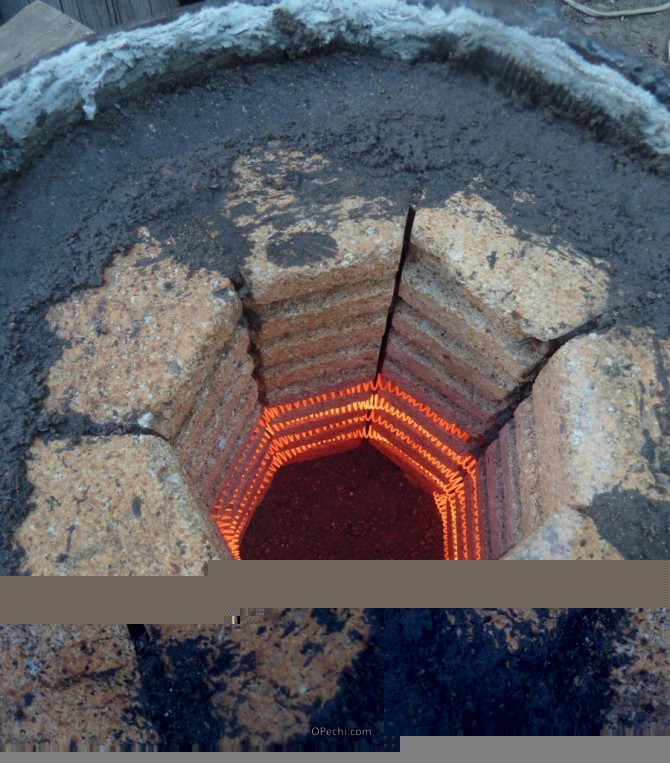
DIY muffle furnace
The resulting ceramic muffle is wrapped with wire (nichrome or fechral, 1 mm in diameter) - it will work as a heating element. In order to secure the wire to the casing, it is covered with a second layer of clay (which is also dried and fired in a coal oven). The ends of the wire are left open for further connection to the mains.
To fold the fireclay muffle, grooves are made in each brick (for the location of the heating coils). After folding the bricks, a spiral wire is placed in the grooves. To fix it in the grooves, the spiral is coated with clay or reinforced with wire.
The finished inner chamber is placed in a metal case. It is welded from steel sheets with a thickness of 2 mm or more. Holes are left in the housing for connection to the heating wire.
A finished muffle is placed inside the casing, the contacts are connected and thermal insulation is made. Basalt wool or asbestos chips are used as an insulating material (asbestos is a more harmful option, carcinogens are released when it is heated).
Note: Such a do-it-yourself muffle furnace allows you to burn ceramic products. For metallurgical annealing or remelting of non-ferrous alloys, an industrial furnace is required.
Self-made muffle furnace
Assembly features
The body is made of steel sheets. Cut rectangles to the required size. Next, the workpiece is bent along the radius, the seams are welded using a welding machine. The resulting cylinder-shaped structure is coated with refractory paint. When the surface is dry, they begin to weld the bottom, the circle for which is cut from the same workpiece. It is recommended that the bottom and the walls be tied with reinforcement. The calculation of the volume of the cylinder is carried out taking into account the thermal insulation layer.
Work progress
- The inner part of the case is laid out with a high-temperature material - basalt wool, which is fastened with ceramic buttons.
- The thermal insulation layer is made of fireclay bricks. 7 pieces are placed in the case. bricks, so that a pipe is formed, which will serve as a chamber. Markings are drawn on the bricks for cutting and shaping for the connection. To simplify the procedure, the bricks are recommended to be numbered. When the building material is given the desired shape, it is collected in a pipe and pulled together with wire. Symmetry must be respected, otherwise adjustments will be required.
- Nichrome wire is twisted into a spiral with a diameter of 6 mm. Winding should be done on the base using electrodes and pencils. After that, the brick structure is taken out of the case and laid out in a row.
- A spiral is applied to the brick, the places for the recesses are marked. The clarity of the lines is measured by the building level. As a result, the spiral should be laid from the bottom to the top of the pipe. The turns should not cross each other, otherwise it will lead to a short circuit.
- To lay spiral cables between the bricks, insert 3 strips, which are cut from ceramic tiles. Polypropylene is inserted into the channels. Next, they are connected to a machine with a built-in stabilizer.
- The finished structure is placed in a steel case. A brick is placed on the bottom, which is covered with a refractory adhesive mortar. A hole is drilled in the right place under the leads of the ends of the spirals in the body.
- The cover is made of sheet steel; for this, the shape of a circle is cut out. For better fixation, one fireclay brick is mounted on the lid. Then the handles, canopy and iron bolt are welded. The parts that will come into contact with the muffle furnace baffles must be coated with fire-resistant silicone. Apply in a non-thin layer to a surface previously treated with degreasing agents.
- First start. The structure must definitely dry in a ventilated area. When drying, it is forbidden to use any heating devices, because this method leads to cracks in the masonry joints. Only after complete drying can the spiral be connected to the machine with a stabilizer. Next, adjust the power and temperature for operation.
We recommend: How the laying of various brick ovens is made
Types of muffle furnaces
Muffle furnaces are classified according to several criteria. They are divided according to the heating method:
- electrical;
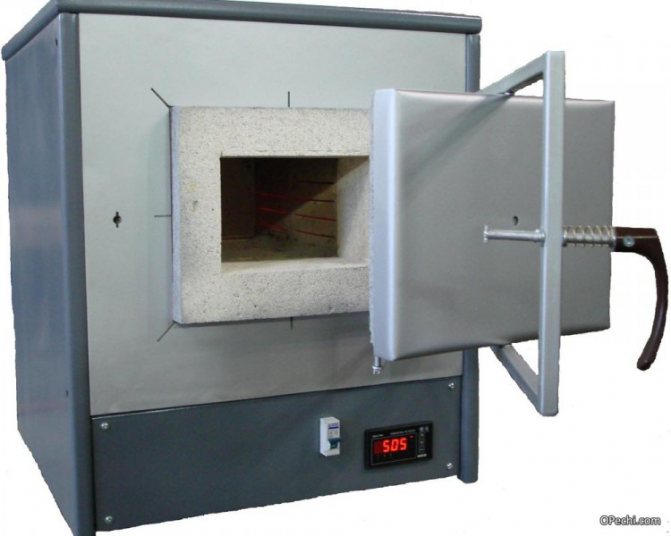

Electric muffle furnace
- gas.
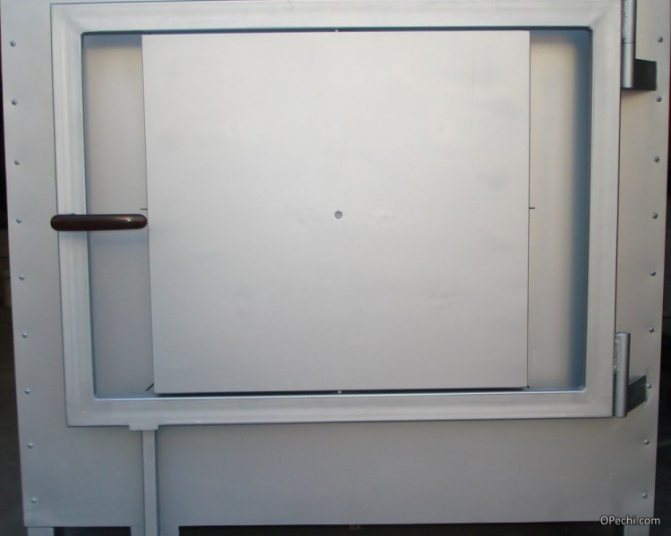

Gas muffle furnace
By type of protective atmosphere:
- Air (the muffle limits the mixing of air between the workspace and the heaters).
- Vacuum (inside the muffle they create a rarefied space - a vacuum).
- Furnaces with a special atmosphere - the space inside the muffle is filled with a special gas (inert, nitriding, reducing, etc.).
The working temperature inside the oven can vary from + 400ºC to 2500ºC. On this basis, muffle furnaces are classified into types:
- For moderate heat up to 500ºC.
- For medium temperatures up to 900ºC.
- For high temperatures up to 1400ºC.
- For extremely high temperatures - up to 2000-2500ºC.
Note: The heating temperature determines the price of the oven. The more the furnace heats up, the higher its cost. In addition, the prices of muffles depend on the size and functional equipment (thermocouples, type of heaters, automation).
Production and use
Muffle furnaces are widely used in the manufacture of various products in industrial enterprises, educational institutions, repair enterprises and jewelry workshops.
For laboratory research, a Snol muffle furnace is used with the help of which hardening, firing and heating of various materials is carried out. The processing of materials carried out with Cnol allows melting metals, making dental prostheses, and hardening ceramics.
Cnol equipment is manufactured by CJSC "Napal" located in Solnechnogorsk, Moscow region. The list of equipment includes models with a working chamber volume from 3 to 40 liters and includes models:
- pm Cnol 10/10;
- pm Cnol 10/11;
- pm Cnol 6/10;
- pm Cnol 3/10;
- pm Cnol 30/13;
- pm Cnol 40/118;
- pm Cnol 7.2 / 13.
with a working temperature of the chamber from 1050 to 1300 ° C (depending on the model). To adjust the temperature regime, a special thermostat is used that allows you to change the temperature in the chamber. To carry out technological operations associated with a large formation of combustion products, a special fume hood is produced, in which a Cnol muffle furnace is placed.
Industrial enterprises manufacture various muffle furnaces EKPS 50 3U, MIMP-10P, MP-2UM, EMP 12.1 M "Averon".
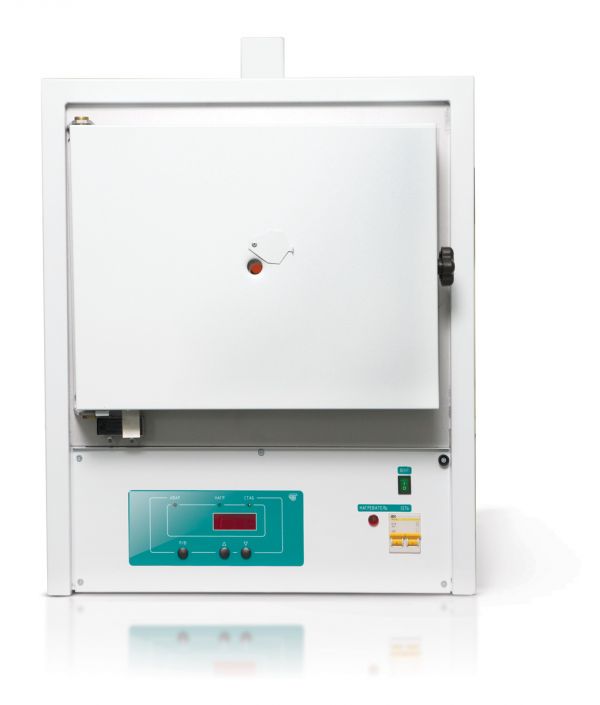

Electric muffle furnace EKPS 50 ZU
In the production of ceramic products, Naberthem muffle furnaces (Germany) are used in more than 100 countries.In the list of manufactured equipment, a special place is occupied by models for firing ceramics with a working chamber volume from 16 to 2200 liters and a heating temperature up to 1340 ° C:
- Top 16 / R + B400 Naberthem;
- Top 45 + B400 Naberthem;
- Top60L + B400 Naberthem;
- Top 80 + B400 Naberthem;
- Top 130 + B400 Naberthem;
- Top 160 + B400 Naberthem;
- Top 190 + B400 Naberthem;
- Top 220 + B400 Naberthem.
Naberthem offers a wide range of laboratory equipment:
- laboratory smelting;
- soldering;
- chamber (with fiber or ceramic insulation);
- agglomeration;
- muffle;
- for ashing;
- for firing ceramics.
Materials and elements for work
A muffle furnace for melting aluminum with your own hands or hardening steel parts - we prepare a full range of materials for production. We will need:
- fireclay brick;
- thermal insulation;
- sheet metal or any material at hand. If you have an old safe with an inner layer of sand, then you are in luck. Such a furnace will last a long time and will save on the outer layer of thermal insulation;
- refractory clay, sand or ready mix for brickwork. To seal cracks and voids, you can purchase a fire-resistant sealant or use a solution;
- electric cable, ceramic insulators, automatic connection in the dashboard.
Calculation of the resistance of the heating element
Knowing the amperage I and supply voltage U according to Ohm's law it will not be difficult to calculate the resistance R:
R = U / I (Ohm) = 220 / 12.27 = 17.92 (Ohm)
Figure 2 shows a spiral of a muffle furnace with calculated current-voltage characteristics:
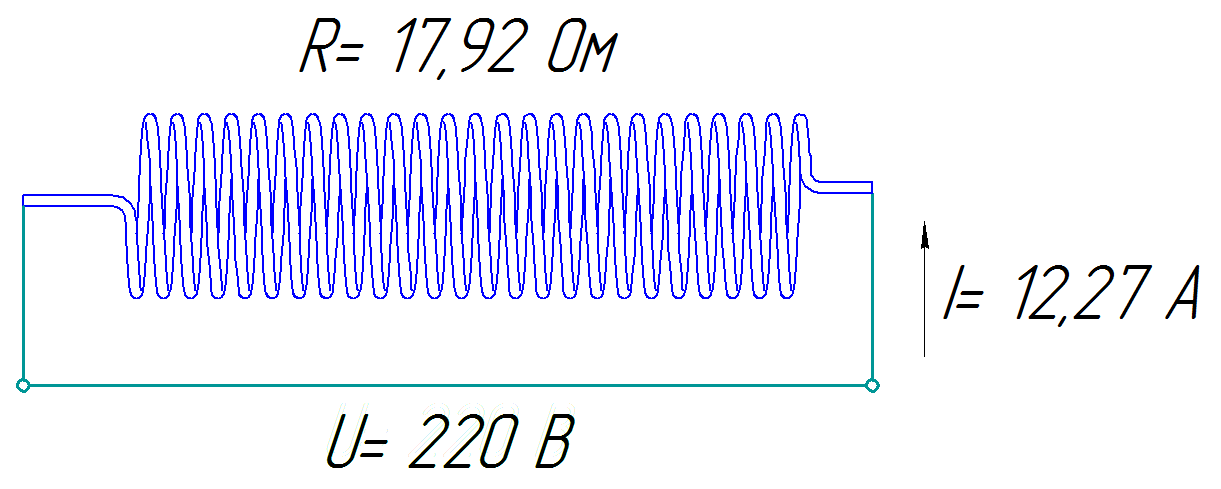

Fig. 2 Calculation of the electrical parameters of the spiral of the muffle furnace
How muffle furnaces work: design
The main structural element of the furnace is the muffle. Parts for heat treatment (or gold for remelting, a medical instrument for heat treatment, ceramics for firing) are loaded into its chamber. The muffle is made from a chemically inert material.
The muffle chamber is located inside the furnace. In this case, the space between the outer casing and the inner chamber is filled with a heat insulator. High-quality thermal insulation determines the efficiency of the device, as well as its safety (it limits the strong heating of the casing and prevents the possibility of getting burned on it).
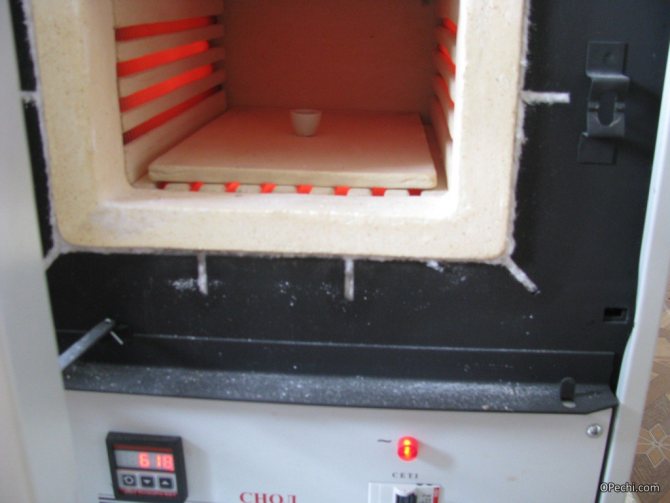

Muffle furnace chamber
Heating elements are located outside the muffle or in its walls. They heat the inner chamber, which in turn transfers heat to the workspace. The operation of the heating elements is controlled by the regulator. It controls the temperature and heating time, the whole heat treatment process. The level of automatic regulation affects the price of the heating device. The more regulating functions, the more expensive the oven is.
Muffle: construction and materials
The following materials are used for the manufacture of the inner chamber:
- ceramics;
- ceramic fiber;
- corundum;
- refractory (fireclay) brick.
The choice of material for the manufacture of the muffle is determined by the operating conditions and the purpose of the furnace. For example, a refractory fiber muffle is used for heating in a neutral environment. Corundum chambers - can be used in chemical environments. But the ceramic muffle is universal. Due to its inertness, it is used for various tasks (remelting, heat treatment, roasting).
Finishing works
The working chamber for the furnace is made of bricks or ceramics. After that, it is placed in a steel case prepared in advance, which already has thermal insulation. It is very important to note here that there must be a minimum distance of 4 cm between the walls of the chamber and the walls of the housing. Insulation is laid in this gap. The cover for the muffle furnace should be made of two layers of metal, between which there is a layer of thermal insulation. Naturally, one must not forget about the arrangement of the handle for opening the oven.
After that, several holes need to be made in the housing through which it will be possible to bring out the wires of the heating element and the thermal sensor.The connection is made to a separate cable, which will be attached to a 20A machine for increased safety. A ceramic lampholder can be used as a connection between the lead and cable. Steel pipes are used as legs for the body. They can be welded or screwed on. If a bolted connection is used, the bottom of the chamber must be lifted so that the bolts are on the outside.
Materials and tools for the assembly of the structure
Before you start making a muffle furnace with your own hands, you need to acquire a set of tools. Useful for work:
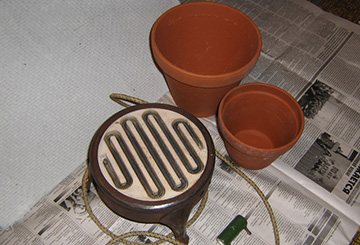

- welding and electrodes;
- Bulgarian;
- nippers and scissors;
- respirator, glasses;
- steel or oven casing;
- metal corner;
- galvanized mesh with a mesh of 2 x 2 cm;
- door - ready-made, or homemade;
- fireclay brick;
- refractory mixture;
- heat-resistant silicone;
- perlite or basalt slab (roofing insulation 1 - 2 cm thick);
- nichrome wire 1 mm.
The thickness of the metal for the case should be 2 - 2.5 mm, since the final structure will be very heavy. For the same reason, if thin-walled household appliances are used, they must be reinforced with a steel angle.
Those who are going to burn ceramics do not need temperatures above 800 ° C, so they can make a muffle from any porcelain or earthenware dish or an old flushing cistern.
Operation of the unit
Naturally, for the home-made manufacture of the device, it is necessary to clearly understand the principle of operation of the device, otherwise the work will initially be doomed to failure. It is worth starting with the fact that four sources can be used as fuel for the operation of the furnace: electricity, gas, coal, firewood. Since the muffle furnace will be made by hand, it is recommended to undertake the implementation of the electrical version of the power source. It consists of two main components: a heating chamber and thermal insulation that keeps heat inside. A refractory brick must be used as a heat accumulator. Heat treatment takes place inside the working chamber - muffle. Hence the name of the unit. To assemble a muffle furnace with your own hands, it is best to use a porcelain mold, for example, from ceramic plates.
Naturally, one must take into account the fact that the melting temperature of the selected material for the mold must be higher than the melting temperature of the material to be processed. Most often, a do-it-yourself homemade muffle furnace made from such materials is used to melt a small amount of metal at a time, as well as to harden tools.
